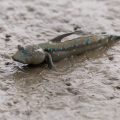Catfish love to be petted and taken care of by humans. Just make sure your petting is gentle enough to make them feel comfortable. Provide them with enough space and proper food at appropriate times, and you are good to go. Catfish can also easily recognize their owners and even bond with them quickly. After a few days of petting, you will notice how your pet catfish starts bonding with you.
But petting a catfish is not like petting a cat or dog, as humans and fishes live in two different habitats. Pet your catfish the way the fish likes it. Do your research properly before you start petting a catfish.
Catfish are super easy to take care of, and they can clean the water mostly by themselves. As they are so low-maintenance, you can start your fish petting journey with them. You can add them to your existing community aquarium too, because adding them will not only increase the charm of your aquarium but also make it easy for you to keep your aquarium clean.

Why Should Catfish be Added to an Aquarium?
Petting catfish is super easy as they are highly adaptable animals and don’t require anything too special, but there are some bonus benefits to adding catfish to aquariums. First of all, catfish are natural bottom feeders as their mouth is designed that way.
So, they would willingly eat waste and food particles from the water. Another thing is that catfish have unique qualities like, breathing out of the water and breathing through the skin. For these reasons, they are considered not only interesting creatures but also very easy to pet.
They can also survive in really high temperatures, up to 100 degrees Fahrenheit. But for petting catfish, you need to keep in mind one important thing, which is- choosing the right species. There are many catfish species that grow so fast that they will outgrow your home aquarium within just a few months.
List of 5 Good Freshwater Catfish
There are plenty of catfish varieties that are perfectly suitable for aquariums. To make your choosing process a bit easier, a short list is provided below:
- Cory Catfish: Cory Catfish is a genus of almost 165 species. All these species have unique looks, qualities, and personalities. But we are keeping them on this list mostly because of their size. Most cory catfish species grow 1 to 4 inches long, which is totally ideal for aquariums. They prefer plant-filled aquariums, and no doubt, such aquariums look so pretty and are totally on trend now.
- Otocinclus: Otocinclus is a very common catfish type that you will often see in aquariums. They are usually 2 inches long and well-known as great algae eaters. So, both their size and habit are very much appropriate to fit in your aquarium.
- Asian Stone Catfish: They are typically just 1.5 inches in size and require only 10-gallon water to live happily. You can find them in some unique colors, and their large fins make them look stunning. They are kind of slow-moving, but they have got the finest look!
- Glass Catfish: Glass catfish are transparent like glass shrimp. Their bones and other organs can be seen through their skin, which is quite interesting to look at. They grow up to approximately 6 inches and require nearly 30-gallon water.
- Upside Down Catfish: Just like their name, they are also super interesting to watch or study as they swim with their belly up most of the time. They are usually 3 to 4 inches long and prefer to live in 30-gallon water.
What Do Catfish Eat in an Aquarium?
You can easily feed sinking-type feeds to your catfish. Packed aquarium feed as frozen dry food is okay, but they also like partially boiled zucchini, pumpkin, or some other similar kind of vegetable. The idea is that the vegetables have to be crunchy after boiling. Small worms, feeder guppies, rotten cheese, sardines, snails, and other foods of this type are also appropriate for feeding catfish.
Catfish prefer to hunt their own food. Have some rocks, plants, and a few stones in your aquarium to make your catfish’s life more fun and interesting.
How Catfish Survive During a Drought?
As catfish have the ability to breathe outside the water, they prefer living in drought-prone areas sometimes. Then, when they face a drought, catfish don’t die instantly like most other fish types. Instead, they find a new place filled with enough water, or at least sufficient moisture. Such moisture hunting is a very hard thing to do, yet they survive in most cases. Typically, to deal with a drought, they move forward in a flip-flop motion and find a water reservoir to survive, but in some difficult situations, when they can’t find a reservoir, catfish start looking for wet, well-moisturized, and deep mud to immerse in and stay alive.
They can breathe and live inside the well-moisturized mud for months. They often keep moving for nearly 15 to 18 hours if their skin is wet. Then, when it starts raining again, catfish move to find a better water-filled lake or river to live in.
The answer to the above-asked question is- catfishes start going forward to find a water reservoir as early as they can, whenever they have to face a drought. When there is no water reservoir available nearby, they get into wet mud, and then whenever it rains again, they go back to a nearby pond, river, or lake.
Unique Catfish Organs
Catfishes have a few unique organs, such as-
- Suprabranchial: A lung-like organ that helps them breathe air.
- Oxygen Absorbing Skin: They can take oxygen from the air through their skin, as long as their skin is wet.
- Weberian Apparatus: This super unique organ helps them to communicate underwater and also hear better.












Pingback: Do Catfish Like to Swim Around People? | Reel Fishing Guru